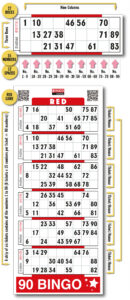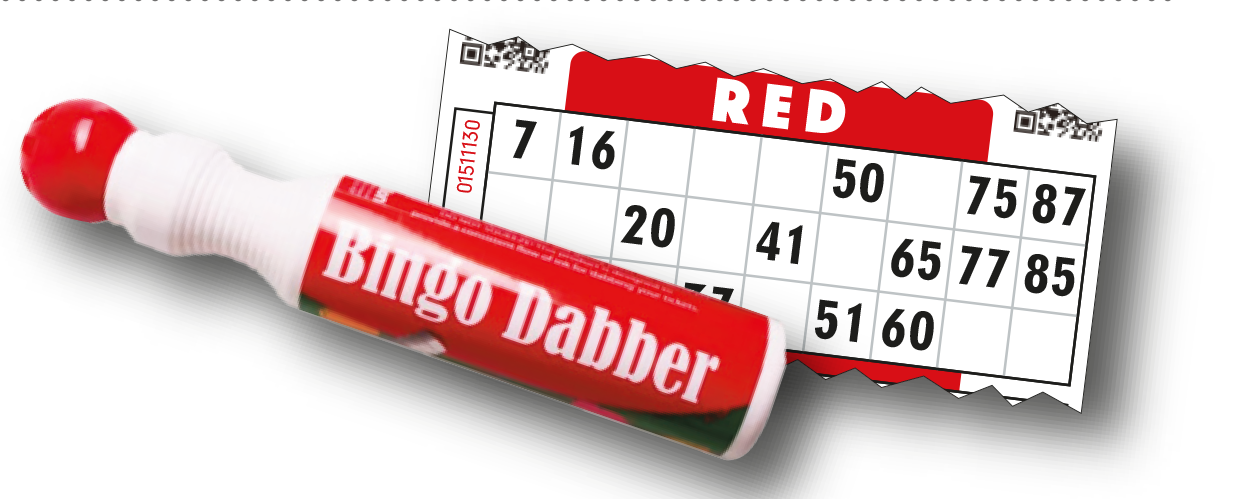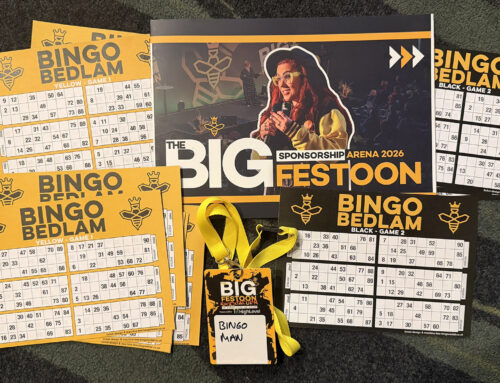 Each ticket or House has three rows and nine columns with 15 numbers and 12 spaces.
Each ticket or House has three rows and nine columns with 15 numbers and 12 spaces.
Five numbers per row.
Tickets are usually printed six-up on a sheet, sometimes 12.
A strip of six has all numbers 1 to 90 (15 numbers per house x 6 = 90). So a strip of 12 tickets has all the numbers twice.
- The first column has the numbers 1 to 9,
- The second column 10 to 19,
- The third 20 to 29,
- The fourth 30 to 39,
- The fifth 40 to 49,
- The sixth 50 to 59,
- The seventh 60 to 69,
- The eighth 70 to 79
- And the final ninth column has the numbers 80 to 90.
Once you understand where the numbers are, it makes it easier to find them when they are called: 48 is always in the fifth column, 90 is in the last, 7 is in the first, etc, etc.
At the start of gameplay play your caller will tell you what you are playing for (a line, two lines or a full house) and which card you are playing. They are colour-coded, e.g. the ‘Red’ card right.
If numbers are called too quickly, you can ask the caller to slow down. If you didn’t hear a call or weren’t sure what was said, ask the caller to repeat it.
A winning line is covering all five numbers in any of the three lines in a house (any of the 18 lines in a sheet of six houses).
For two lines, both have to be in the same house or ticket.
For a full house, you need to cover all 15 numbers on any of your six tickets/houses. To win, you must shout ‘Bingo’ on the number you win before the next number gets called.



Leave A Comment